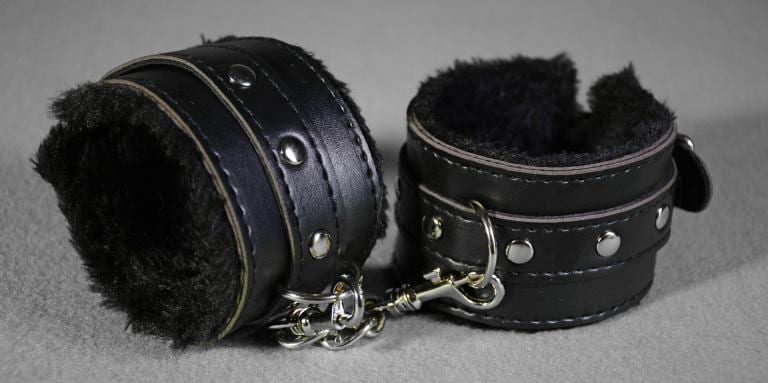A little over a year ago, I posted on my blog that I was thinking of writing a book about natural family planning. I asked readers to post their questions about NFP, especially those questions that they felt hadn’t been answered (or hadn’t been adequately answered) elsewhere. My promise was that I would basically do a bunch of research and try my best to answer the questions that were posed. This series is the fruit of that project.
One of the first, and to my mind funniest, questions I received was “Why do we need another book about NFP?” The questioners point of view was basically that it’s all been said: Roma locuta est, causa finita est. Apart from the official teaching there are already a number of books and manuals explaining how to us various forms of NFP, a slew of documentation defending the practice, several guides for keeping sex hot while you do it, and one very funny book that answers practical questions like “what to confess when your husband is gnawing the bedsheets” and “how can you use closet space to creatively increase the number of bedrooms in your home.” (The latter, Simcha Fisher’s Sinner’s Guide to NFP I highly recommend to couples who are starting out with NFP, and also to single people who have weird, starry-eyed ideas about what it entails.)
So why do we need another book? What could it possibly include – except, possibly, heresy?
Basically, the reason I think this book is necessary is that existing literature about NFP tends to be divided into clear camps. There are sources whose essential purpose is apologetic: these texts present natural family planning as unilaterally good. They tend to gloss over the difficulties that couples have, and they show a marked preference for studies and statistics that demonstrate very high levels of effectiveness. When criticisms of NFP are mentioned in these sources, the purpose of mentioning them is basically to provide counter-arguments.
Then there are others whose purpose is to show that the Church’s teaching on contraception is backwards, that NFP is severely problematic (possibly even misogynistic) and that Humanae Vitae needs to be canned. Like right now. For the good of the entire human race.
The closest thing I’ve ever seen to a book that seeks a middle path is Simcha’s – but The Sinner’s Guide is not a rigorous treatment of the problems or of the data. It doesn’t pretend to be. It’s meant to be a collection of essays, many of them humorous, that provide Simcha’s own insights as a long-time user of natural family planning. It’s the kind of book that you can pick up to give you a good laugh and a sense of solidarity when you’re struggling through Phase 2. But if you’re really wrestling with theological questions, or with a serious hard case, it’s not the book you need.
I know this because that was basically where I was at four years ago. I had just lost a child to miscarriage. The pregnancy was the result of my third consecutive failure to space births using NFP. Before I became pregnant I was suffering from reproductive health problems and after a number of visits to a gynecologist I was told that if I wasn’t willing to take the Pill, there was nothing that she could do for me. Basically, I was cycling every two to three weeks, with heavy periods every cycle. This meant that ovulation often occurred while I was on my period, and charting using sympto-thermal (the method that I knew at the time) was functionally impossible. Even with iron supplements I wasn’t able to keep up with the anemia, and by the time that I got pregnant both my body and my reproductive system were basically exhausted.
The miscarriage, at 15 weeks, was late enough that it’s not likely that it was a result of genetic non-viability. I’d already seen the baby’s heart beating on an ultrasound screen. I can’t be sure that my poor health was the reason I lost the baby, but it’s definitely a possibility that I cannot dismiss out of hand.
Before that pregnancy I knew that I was having health problems, and I knew that those problems made it impossibly difficult to use NFP. I also knew that pregnancy might be dangerous – but I only really thought of it as being potentially dangerous to me. The Catholic literature that I had read tended to stress the idea that it was heroic for women to accept the possibility of dying for their unborn children, a kind of pro-life martyrdom. I’d even heard priests quote Matthew 10:28, “do not fear those who kill the body but cannot kill the soul. Rather fear him who can destroy both soul and body in hell,” to explain that it is preferable for a woman to risk a life-threatening pregnancy rather than risk damnation by using a condom. It never occurred to me that the life I was putting on the line might not be my own, but that of my unborn child.
So let’s just say that Simcha’s book, though very good, was not nearly sufficient to address the crisis of conscience and of faith that followed my miscarriage.
It was, however, the only resource that anyone could recommend. I went to priest after priest. I talked to theologians. I asked my NFP instructor. The most common response that I got to my questions was a long, painful silence and then, “Wow. That’s tough. I really don’t know.” One of the priests that my husband talked to suggested that if we got it figured out, I should write a book about it.
I will not claim, at all, to have it figured out. The only claim I do make is that I am willing, to the best of my ability, to wrestle seriously not only with my own questions but also with the questions that my readers have put to me. Towards this end, I’ve looked at dozens of studies, I’ve read all of the documents put out by the Church over the past hundred years that deal with this in any way, I’ve studied the theological history of the teaching, I’ve read articles by those who love NFP and by those who hate it, I’ve listened to men and women talk about their experiences with natural family planning, and I’ve spent a lot of time thinking and a lot of time praying about it.
I’ve also come to a point where even though I don’t think I have answers, I do have a certain amount of peace. After the miscarriage, my health slowly improved and eventually I got to the point where I felt it was safe to try NFP again, this time using a combination of Billings plus ovulation test strips. About eleven months later, my son Malachi was born. Apparently I still suck really badly at natural family planning. But I do make lovely babies.
That probably seems like a strange qualification for me to write a book about NFP – but actually, it’s the fact that I am bad at it, horribly horribly bad at it, that makes this work unique. I can’t simply accept the pro-NFP propaganda at face value, because I have first hand knowledge of the difficulties that NFP actually presents to couples. I also can’t simply reject the Church’s teaching outright: it is responsible for the lives of most of my children, and although I have strong criticisms about the way that the teaching is promulgated, enforced and supported, at the same time I am deeply grateful for the ways in which it has called me to be more generous with my body and with my love.
What this series is, then, is an honest, well-researched but also deeply personal attempt to grapple with the difficulties, absurdities, wonders, joys, inconsistencies, miracles and frustrations involved in trying to understand, believe and live this teaching. It may not have all of the answers that you are looking for. Some of those answers, as far as I can tell, simply don’t exist. But even when I can’t help you out I will at the very least do you the courtesy of taking your questions, your doubts, and your experiences seriously.
Image credit: pixabay
Stay in touch! Like Catholic Authenticity on Facebook:












